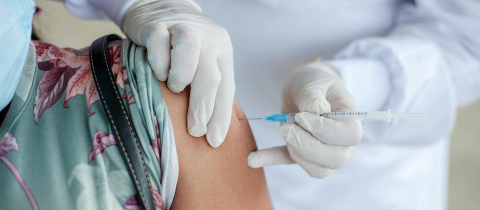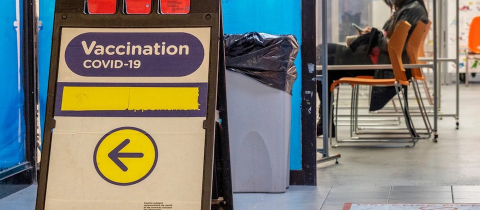Since the pandemic began, news of animals becoming infected with SARS-CoV-2 has been trickling in from across the world. From a 17-year-old Pomeranian in Hong Kong to a tiger from the Bronx Zoo, owners’ anxieties have been rising with each new report. Despite assurances from organizations like the United States Department of Agriculture or the Canadian Veterinary Medical Association that there is no evidence domestic animals can infect humans, many pet parents have been left with questions about their animals and COVID-19. Hopefully, at least a few of them will be answered here.
Cats and COVID-19
A preprint study published on March 31st, 2020 found that that cats were “highly susceptible to SARS-CoV-2” and could spread it to uninfected cats. While these results are interesting, we must take into account the study’s limitations. Namely, the sample size and the experimental conditions.
This study really only proves that cats can become infected under experimental conditions. It doesn’t tell us about natural conditions. Study cats were inoculated by placing a large number of viral particles directly in their noses. In real life, cats may inhale viral particles released from a COVID-19 positive person or animal, but the particles won’t be hand-delivered directly to their noses, and there will be far fewer of them.
Similarly, while two out of six healthy study cats tested positive for SARS-CoV-2 after being exposed to their infected brethren, the cats were housed in conditions ideal for viral transfer. Airflow was regulated such that air from the infected cat’s container was channeled directly into the uninfected cat’s container. In a home, viral particles from an infected organism don’t travel straight to uninfected creatures, and accordingly, the transmission risks aren’t as high. Indeed, one of the homes from which a cat tested positive in New York in April had a second cat who showed no signs of illness.
A different preprint study saw blood sampled from 102 cats in Wuhan China after the outbreak. Of these cats, who were found in pet hospitals or shelters, 11 tested positive for SARS-CoV-2 antibodies, indicating that they had been infected. The fact that only 10% of the tested cats had been infected shows that the rate of transmission, either from human to feline, or feline to feline, is quite low.
If COVID-19 were spreading between cats, or from humans to cats, at the rates that it’s spreading between humans, we would expect a multitude of cases, not the handful we’ve seen. There are an estimated 94 million cats and over 1 million cases of COVID-19 in the U.S. today. If cats were likely to catch this coronavirus from their humans, we would be seeing an increase in feline COVID-19 that we’re just not.
Canines and COVID-19
The same preprint study I mentioned before also found, using similar methods as for cats, that dogs have “low susceptibility” to SARS-CoV-2. Nevertheless, the first canine was diagnosed with COVID-19 in the U.S. just a few days ago; Winston the pug was tested after displaying mild respiratory symptoms and loss of appetite, as part of a study at Duke University.
Winston’s diagnosis confirms the fact that dogs can become infected. He likely caught COVID-19 from one of his human family members since three out of four of them tested positive. However, like the previously mentioned cat from New York, Winston lived with another dog and cat who both tested negative. Given the amount of time he likely spent with these animals, all signs point to transmission between dogs, or from dogs to cats, being very unlikely.
A preprint study from France tested 9 cats and 12 dogs who lived in a community of 20 veterinary students, two of whom had tested positive for COVID-19, and several more of whom suspected themselves infected. Even though several of the animals had clinical symptoms compatible with COVID-19, none of them tested positive. This reinforces how different SARS-CoV-2 infections appear to be in animals versus humans. While human to human transmission is quite common, human to animal, and animal to animal transmission appears to be rare.
Why don’t we just test all our pets?
There are a few good reasons to not start screening all domestic animals in Canada or the U.S. for COVID-19. First and foremost, because this virus doesn’t seem to pose a threat to animals’ lives. None of the animals that have been proven infected with SARS-CoV-2 have had severe symptoms, and none of them have died. While COVID-19 is proving quite deadly in human populations, for cats and dogs it appears to be rather mild.
This is especially important since testing animals is not as simple as testing humans. While unhappy about it, a human will sit still while a medical professional swab their sinuses and throat. A cat or dog, however, needs to be sedated for this procedure. Sedation carries risks in all animals (including humans) but can be especially risky for animals with health complications, or those of advanced age. It’s quite likely that the risks of putting animals under sedation in order to test them outweigh the risks posed to them by COVID-19.
One canine case, the aforementioned 17-year-old Pomeranian did pass away shortly after being diagnosed, however, his death is believed to be due to ongoing health issues and advanced age. Since the owner refused to allow a post-mortem examination we cannot be certain what killed the dog, but he showed no clinical signs of COVID-19 before his death.
Second, because of the nature of diagnostic testing, a large number of tests will result in a large number of false positives. Researchers at the Mayo clinic modelled what the number of false-positive results could be if every health care professional in the U.S. (roughly four million people) was tested for COVID-19, and predicted as many as 40 000 false positives. The screening of over two million pets would result in tens of thousands of false positives, and, given the low severity of COVID-19 infections in animals, likely not save even a single pet from death.
Third, we lack a unified strategy for what to do with pets identified by tests as COVI-19 positive. While humans with mild symptoms can quarantine at home, and attempt to not interact with others, this isn’t realistic for many pets. Dogs need to be walked, cat litter needs to be changed, and even if an infected animal could be isolated to one room or part of the home, since they can’t understand what’s happening it would likely lead to a lot of anxiety and distress in the animals. Veterinary clinics and boarding facilities could be utilized for isolating sick animals, but who would be responsible for the cost? Would owners be left to pay expensive boarding bills, or would the government offset these costs?
Animal Welfare Is at Stake
Even while the risks to animals’ health is proving minimal, the risk to animals’ welfare is not.
As a result of the pandemic, and especially the spread of misinformation and panic, cats and dogs are being killed, abandoned or neglected due to fears related to COVID-19.
There are reports from China of dogs and cats being thrown to their deaths from apartment buildings, and at least one dog in the U.S. was dumped and abandoned because her owner thought she could give him COVID-19.
Problems arise even when pets are surrendered through the appropriate means to shelters and rescues. Chinese animal shelters are overwhelmed with animals. While many owners are citing coronavirus fears as their reason for surrendering their pets, some can no longer afford to take care of their animals since losing their jobs during the pandemic. The cat shelter I volunteer at, Réseau Secours Animal, has taken in several cats recently for this just this reason.
Time at home has led some to adopt a furry companion to keep them company, some shelters in the U.S. have been lucky enough to become completely empty, but there are also fears about what happens to these animals after the pandemic. Hopefully, we won’t see a surge in surrenders associated with owners returning to work and not having time for their pets, but we very well may.
For now, given the low rates of transmission to and between cats and dogs, and their mild symptoms, you can sleep easy knowing that even in the unlikely event that your pet is infected with SARS-CoV-2, they will very likely be just fine. Just in case, however, it is good practice to keep your pets separated from strangers, both human and animal, and especially from anyone diagnosed with COVID-19.
Take-home message:
- Cats and dogs are susceptible to SARS-CoV-2 infection, but they exhibit very mild, if any, symptoms, and slow rates of transmission.
- There is no evidence that COVID-19 can pass from an infected domestic animal to humans.
- Animals are being killed and abandoned as a result of misinformation about their role in this pandemic







